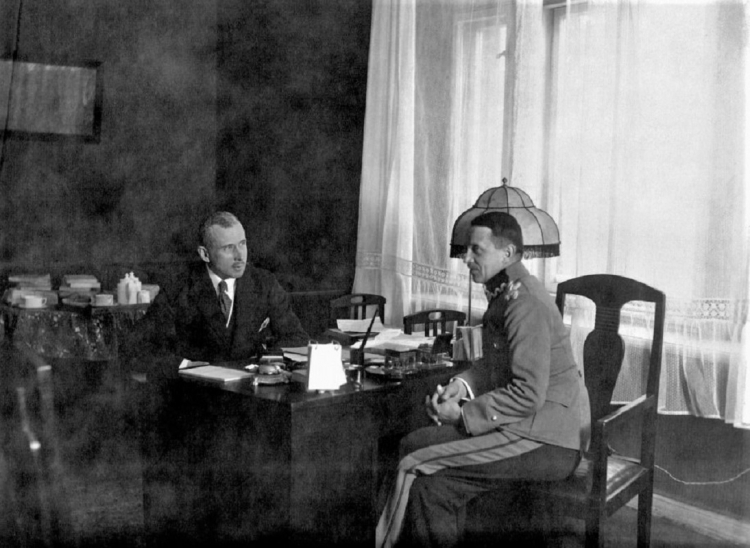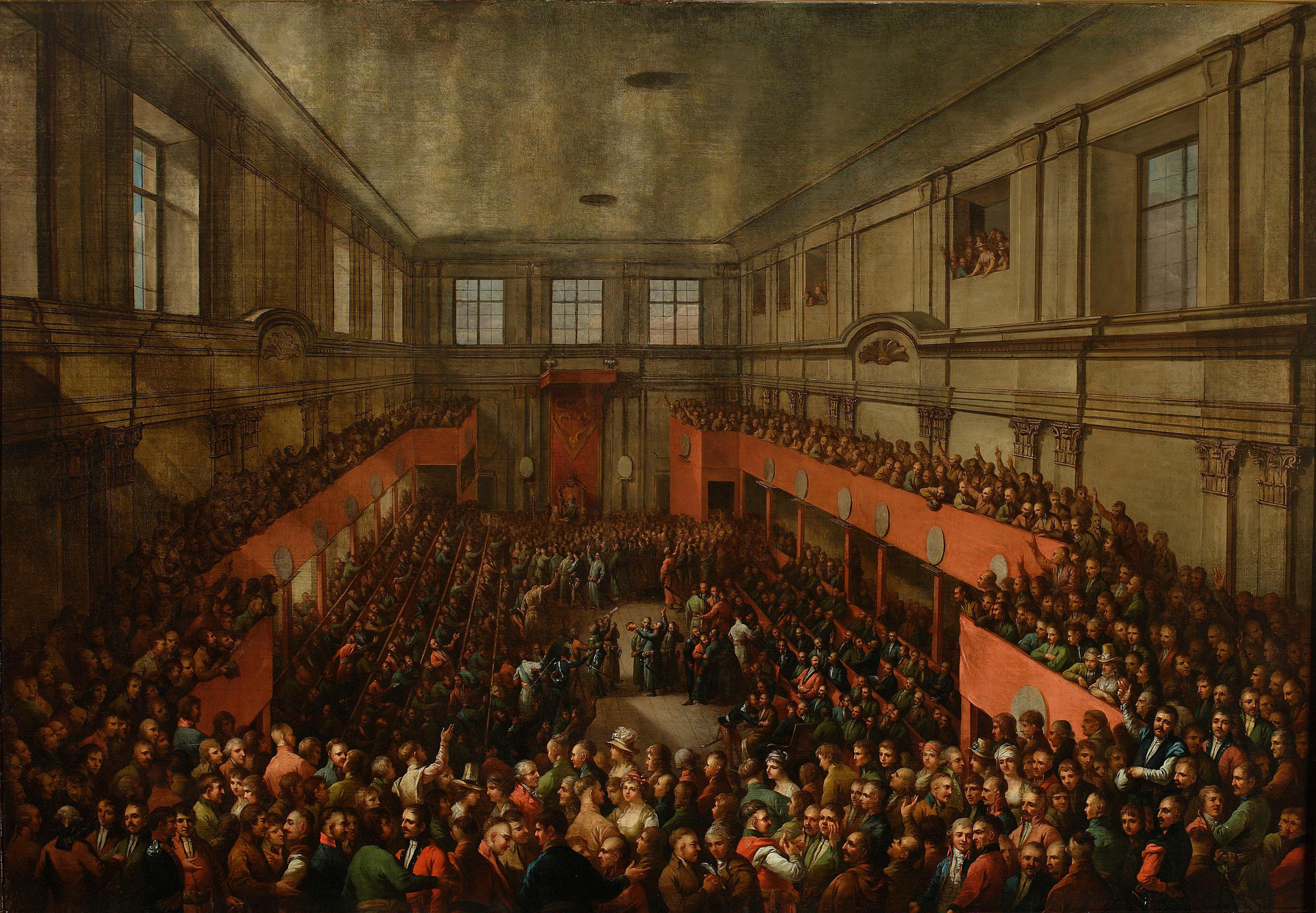The 58th Infantry Regiment from New York has gone down in history as the most famous Polish unit in the Union Army and the Civil War. No less famous was its founder, Włodzimierz Krzyżanowski.
by Rafał Gumiński
Włodzimierz Bonawentura Krzyżanowski was born on July 8, 1824, in Rożnowo in the Grand Duchy of Ponań, established under the provisions of the Congress of Vienna. As a result of his father’s death and financial problems, Wlodzimierz’s siblings and mother moved to the Kingdom of Poland, leaving her son in the care of his father’s family in Poznań. While a student at St. Magdalene Gymnasium, Krzyżanowski became involved in illegal independence activities. In 1846, mass arrests of conspirators forced him to flee first to Hamburg and from there to the United States of America.
Wlodzimierz Krzyzanowski’s American career
After arriving in New York on January 25, 1847, Krzyżanowski continued his education by beginning to learn English. He first worked as a civil engineer surveying in Virginia. Krzyzanowski then moved west, working on railroad construction in the Midwestern states. After returning to New York, he married General Burnett’s niece, Caroline, and moved to Washington, D.C., where he opened a profitable trading company.
Having achieved financial and social stability, Krzyżanowski became actively engaged in U.S. political life, joining the recently formed Republican Party in the mid-1850s. He was quite involved in the party’s political program, especially the abolition of slavery, considering it the noblest act of the current century. Charisma and sizable financial resources soon led him to become the president of the Republican Club in Washington. When the Republican candidate Abraham Lincoln was elected president of the United States in 1860, Krzyzanowski served as a state police officer.

Formation of the 58th New York Infantry Regiment
Lincoln’s election as president inevitably led to war between the North and the Southern states, which quickly joined the newly formed Confederate States of America. On April 12, 1861, an attack on federal troops at Fort Sumter formally began the Civil War.
Following a presidential proclamation calling 75,000 volunteers to arms, Krzyżanowski enlisted in the Union volunteer army and organized his own militia unit in just a few days – Krzyzanowski’s Company, Militia Infantry. It remained in Washington, D.C., for three months to defend the capital. It was then disbanded. Krzyzanowski was promoted to major of the volunteer army during this time and a month later to colonel with a permit authorizing him to form another regiment. He moved to New York City and established the regiment’s headquarters at 289 Broadway. Despite the effort put in, the colonel encountered a problem with the formation of the entire regiment. However, the crisis was resolved by combining the incomplete regiment of the Polish colonel with the equally incomplete regiment of Colonel Andrew Lutz to form the 58th New York Infantry Regiment.

Polish Legion
Formed in October 1861, the regiment had a very multinational character. Moreover, contrary to the unit’s name, Poles were not the dominant national group. The core of the unit, which numbered about 862 soldiers, consisted of Germans, Italians, French, Russians, and Danes, while Poles probably numbered around 55. The name of the unit itself was initially associated with Company C of the 31st Infantry Regiment from New York, commanded by Major Aleksander Raszewski, which is considered to be the most Polish unit in the Federal troops by percentage. The company was even permitted to wear Polish uniforms, which was not an isolated practice in the early stages of the war. Over time, however, the name “Polish Legion” began to be associated with Włodzimierz Krzyżanowski’s unit.
Once formed, the 58th Infantry Regiment was assigned to Brigadier General Louis Blenker’s division stationed in Hunter’s Chapel, Virginia. The conditions Krzyżanowski and his soldiers found there were far from good. There was a smallpox epidemic raging in Gen. Blenker’s division. Of the 8354 soldiers in December 1861, as many as 1,250 were sick. After establishing a hospital, the situation began to improve, but the disease was still a problem. In February of the following year, 421 men were ill, of whom as many as 58 belonged to the Polish Legion. Krzyzanowski himself also fell ill.
The first battle involving Krzyzanowski’s regiment occurred on June 8, 1862, at Cross Keys – a battle that was part of Confederate General Thomas J. “Stonewall” Jackson’s famous campaign in the Shenandoah Valley. The Polish Legion was part of a reserve near the center of the Federal troops. When General Julius Stahel’s brigade was smashed, Krzyzanowski, wanting to stop the advance of the Southern troops, led the Polish Legion to attack, conducting first a firefight and then a bayonet charge that drove back the Confederates. However, these efforts were not enough to change the course of the entire battle.
After the battle, Krzyzanowski became commander of a brigade that included the 58th and 54th infantry regiments from New York and the 75th Infantry Regiment from Pennsylvania. In turn, the entire brigade became part of Brigadier General Carl Schulz’s division.

Further Battles by Krzyżanowski’s Legion
The next battle involving the Legion occurred on August 29-30, 1862, during the Second Battle of Bull Run, during which, on the first day, the Pole’s entire brigade, along with the rest of the division, suffered heavy losses as they stormed Confederate fortifications along the Manassas Gap railroad. The next day, it succumbed to a flanking attack by Gen. James Longstreet’s troops. Krzyżanowski then lost his horse, from which he fell, suffering a concussion. The injury resulted in at least a two-month absence and convalescing in Washington, D.C., in September and October.
The Polish Legion and Krzyżanowski’s entire brigade took part in the Battle of Chancellorsville (April 30-May 6, 1863), which the Union lost. Colonel Krzyżanowski commanded the Polish Legion and the 26th Wisconsin Infantry Regiment in this great battle. After finding itself under heavy fire, the 58th regiment withdrew from the battlefield, leaving the commander with the Wisconsin regiment. The strong resistance by Krzyżanowski’s unit allowed the Union troops to organize a new line of defense, helping save the Army of the Potomac.
Krzyżanowski and his brigade also participated in the famous Battle of Gettysburg (July 1-3, 1863). On the first day of the battle, Krzyżanowski’s troops were involved in heavy fighting in the North of the city. Krzyżanowski himself was seriously wounded after being crushed by his horse. On the second day, the Polish Legion and the rest of the brigade retreated to the so-called Cemetery Hill, covering the artillery located there. Fortunately, the massive Confederate cannon fire directed at his positions did not cause heavy losses. Cemetery Hill then resisted the attack of the Southern soldiers, who retreated under the force of Colonel Krzyżanowski’s counterattack. By the third day of the battle, which was victorious for the Union, Krzyzanowski’s brigade no longer engaged in any serious fighting.

The End of the War
After participating in battles and skirmishes, the Polish Legion and its commanders were sent to defend the main supply line of Gen. William T. Sherman’s army between Bridgeport and Lookout Creek, where they stayed between April and October 1864. Polak was then transferred to Stevenson, Alabama, where he stayed until the end of the war.
On March 9, 1865, Włodzimierz Krzyżanowski was appointed titular brigadier general. After the war, he became one of the founders of the veterans’ organization, the Grand Army of the Republic (GAR). In 1869, Krzyżanowski served as the head of the tax office in Georgia and Florida, and in 1871, he moved to New Orleans, where he worked as an agent for the Treasury Department. Two years later, he became a special customs agent in Washington. In 1874, after his release, Krzyzanowski moved to San Francisco, where he opened a tavern where the famous Polish writer Henryk Sienkiewicz was a frequent guest. Krzyżanowski continued to live in California and Panama before finally returning to New York in 1882. He died on January 31, 1887, remaining an active member of the Polish and veteran communities until the end of his life.
Author: Rafał Gumiński
Translation: Alicja Rose & Jessica Sirotin





